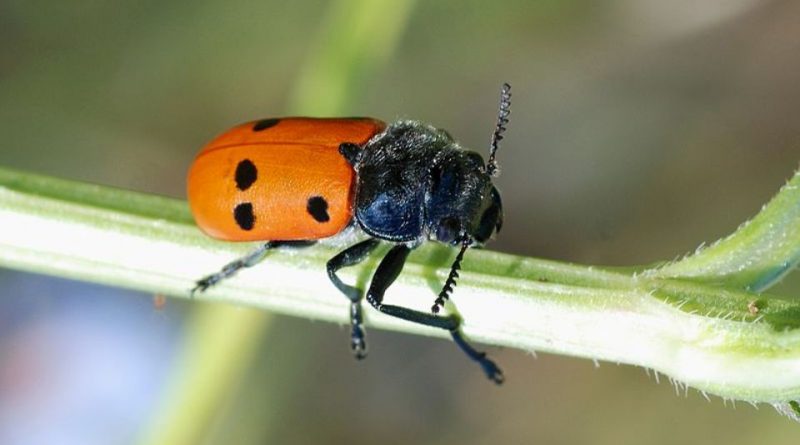Lachnaea sex-punctata
Lachnaea sex-punctata
The Lacnea with Six Points (Lachnaea sex-punctata Scop.) Is a small-medium sized insect from the Chrysomelidae family.
Systematics –
From a systematic point of view, it belongs to the Eukaryota Domain, Animalia Kingdom, Subgenus Eumetazoa, Bilateria Branch, Phylum Arthropoda, Subphylum Tracheata, Superclass Hexapoda, Class Insecta, Subclass Pterygota, Cohort Endopterygota, Superorder Oligoneoptera, Section Coleopteroidea, Coleoptera Order, Suborder Polyphaga, Infraorder Cucujiformia, Chrysomeloidea Superfamily, Chrysomelidae Family and then to the Genus Lachnaea and to the L. sex-punctata Species.
Geographical Distribution and Habitat –
Lacnea with Six Points is a fairly widespread and common species, especially in northern Italy. It is a polyphagous species that attacks the rose and other plants as cultivated or ornamental herbaceous and arboreal.
Morphology –
The Lachnaea sex-punctata is an insect of 6-8 mm of size, characterized by an elongated blackish body and with the elytrates of yellow-ocher dark or hazel color; these have six dark round spots (three per elitra).
The head, like the rest of the body, is blackish, as are the antennae and legs.
Attitude and biological cycle –
The Lachnaea sex-punctata is a polyphagous species whose adults behave like voracious defoliators and, in some cases, from antophaguses directly disfiguring the flower. The adults of this insect make their appearance in the period between the end of spring and the beginning of summer, a period in which they carry out the maximum of their activity being able to cause the maximum damage also economic with their activity of erosion of the flowers of rose or other ornamental plants.
Ecological Role –
This insect has a high polyphagia, as it can involve various plants such as cultivated or ornamental herbaceous and arboreal plants.
It is particularly widespread in northern Italy, where in recent times, perhaps also due to climate change, it has increased its presence creating more damage.
As said the damage is related to its trophic activity, in particular the adult stages.
The fight against this insect, given the period of greatest presence in the summer is not easy. Instant interventions should be made at the first spring appearances to avoid interfering with useful entomofauna.
Once the flowers are open, any intervention is, from an ecological point of view, and therefore economic, worse than the remedy.
To avoid massive infestations it is advised not to specialize the crops but to associate them.
In extreme cases, and with the aforementioned requirements, against the Lachnaea sex-punctata, given the increasingly recurrent infestations, chemical interventions with medium-wide spectrum products can be used. We reiterate the need not to intervene during the phenological phase of open flowers and in the presence of pollinating or entomophagous insects.
Guido Bissanti
Sources
– Wikipedia, the free encyclopedia.
– Russo G., 1976. Agrarian Entomology. Special Part. Liguori Editore, Naples.
– Tremblay E., 1997. Applied entomology. Liguori Editore, Naples.

